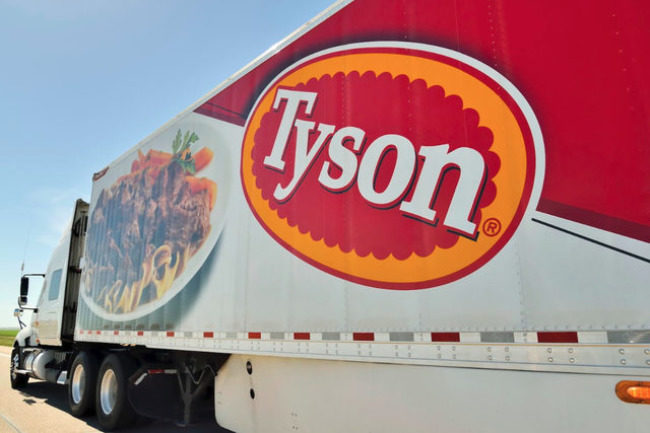SPRINGDALE, ARK. — Despite market challenges that included widespread drought and higher input costs, executives with Tyson Foods Inc. reported satisfaction with its fiscal third quarter results ended July 2, 2022. The company’s sales for the quarter were $13.49 billion, compared to $12.47 billion in the third quarter of 2021. Adjusted net income for the quarter increased to $750 million, or $2.07 per share on the common stock, compared to $749 million, or $2.05 per share, in the same quarter of fiscal 2021. However, operating income slightly declined to $1.03 billion from $1.06 billion during the same period last year.
“We delivered solid results during the third quarter, focusing on operational excellence and aggressive cost management,” said Donnie King, president and chief executive officer of Tyson Foods. “The turnaround of our chicken business continues, and we continue to be the market share leader in many of our retail business lines, which include our Tyson, Jimmy Dean, Hillshire Farm and Ball Park iconic brands.
“We maintained double-digit sales and earnings growth year to date as well as progressing toward our goal of delivering more than $1 billion in recurring productivity savings by the end of fiscal 2024.”
While Tyson experienced a beef sales volume increase during the third quarter, sales volume has dropped the first nine months of the fiscal year. The company attributed higher herd liquidation to widespread drought that has affected 40% of the areas where its cattle are produced.
“Additionally, operating income in fiscal 2021 was impacted by a $55 million gain from the recovery of cattle inventory related to a cattle supplier's misappropriation of company funds,” Tyson said. “Operating income decreased in the third quarter of fiscal 2022 as margins began to reduce from historically high levels paired with continued increased operating costs.”
Tyson reported sales in its chicken segment of $4.37 billion, an increase of 25% over last year’s sales of $3.48 billion. Volume in the segment declined 2.1% while prices increased 20.1% in the quarter
“In the third quarter of fiscal 2022, we experienced $145 million of higher feed ingredient costs and $23 million of net derivative losses as compared to $56 million of net derivative gains in the third quarter of fiscal 2021,” the company said. “In the first nine months of fiscal 2022, we experienced $430 million of higher feed ingredient costs.”
Referring to its pork segment, Tyson said, “Average sales price increased in the first nine months of fiscal 2022 as input costs such as live hogs, labor, freight and transportation costs increased, partially offset by unfavorable mix associated with labor shortages.”
Inflation, the divestiture of Tyson’s pet treats business and the challenging supply environment were causes Tyson attributed to its 8.5% decrease in Prepared Foods sales volume. The business earned $2.44 billion, compared to $2.32 billion last year, with a 13.8% average price increase.
“Beginning in fiscal 2022, we launched a new productivity program, which is designed to drive a better, faster and more agile organization that is supported by a culture of continuous improvement and faster decision making,” Tyson said. “We are targeting $1 billion in productivity savings by the end of fiscal 2024 and more than $400 million in fiscal 2022, relative to a fiscal 2021 cost baseline. We are currently on track to achieve our planned productivity savings for fiscal 2022.”
“I'm optimistic about our ability to win with our team members, win with our customers and consumers and win with excellence in execution,” King said.


